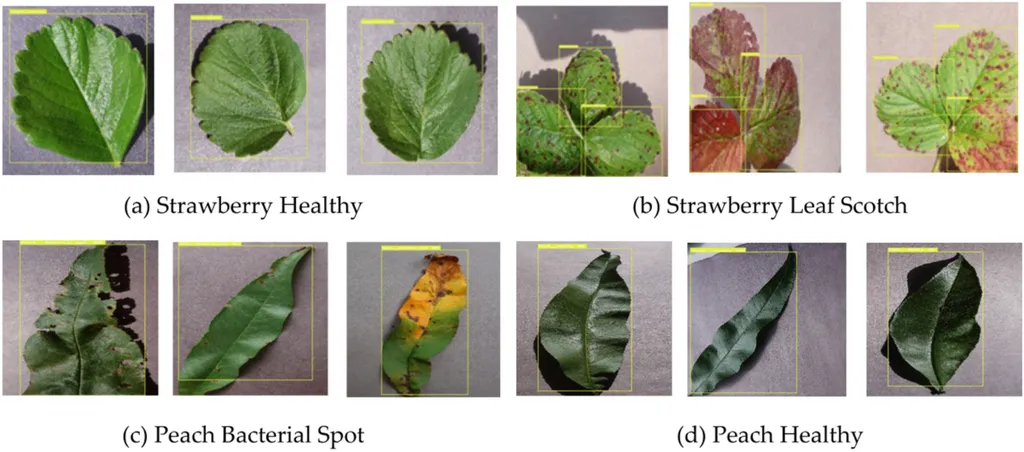In the heart of Dhaka, Bangladesh, a groundbreaking dataset is set to revolutionize the way we diagnose and treat diseases in medicinal plants. Md. Fahim Ferdous, a researcher from the Department of Computer Science and Engineering at Daffodil International University, has meticulously curated a large-scale computer vision dataset named AI-MedLeafX. This dataset is designed to classify leaf quality into five critical categories: Healthy, Bacterial Spot, Shot Hole, Yellow, and Powdery Mildew, across four distinct plant species—Cinnamomum Camphora (Camphor), Terminalia Chebula (Haritaki), Moringa Oleifera (Sojina), and Azadirachta Indica (Neem).
The dataset, published in ‘Data in Brief’ (translated to English as ‘Short Data’), encompasses 13 classes and includes 65,148 high-resolution images, expanded through comprehensive data augmentation techniques. “This dataset is a game-changer for precision agriculture,” Ferdous explains. “It addresses the pressing need for scalable, high-quality data in agricultural research and establishes a solid foundation for benchmarking novel deep learning architectures.”
The implications for the agricultural sector are profound. By enabling more accurate and efficient leaf disease classification, AI-MedLeafX supports advancements in automated plant disease detection systems. This not only enhances tree health monitoring but also improves crop yield and promotes sustainable agricultural practices. “The potential commercial impacts are significant,” Ferdous adds. “Farmers and agritech companies can leverage this dataset to develop innovative solutions that boost productivity and sustainability.”
The dataset’s diversity, ensured by the use of four different mobile cameras and a range of data augmentation techniques, makes it a robust resource for machine learning and computer vision models. Standardized to 512×512 pixels, the images are seamlessly compatible with various models, facilitating the development of cutting-edge diagnostic tools.
As the world grapples with the challenges of climate change and food security, datasets like AI-MedLeafX are crucial. They pave the way for smarter, more efficient agricultural practices that can withstand environmental pressures and meet the growing demand for food. “This is just the beginning,” Ferdous notes. “The dataset opens up new avenues for research and development in the field of agriculture informatics, ultimately contributing to a more sustainable future.”
In the realm of precision agriculture, AI-MedLeafX stands as a beacon of innovation. Its potential to shape future developments in plant disease detection and treatment is immense, promising a brighter, more sustainable future for the agricultural sector.

